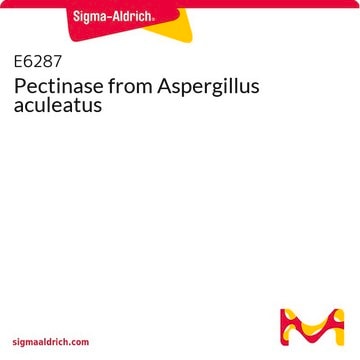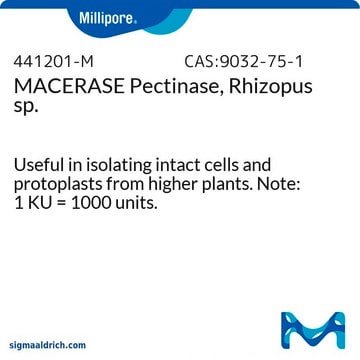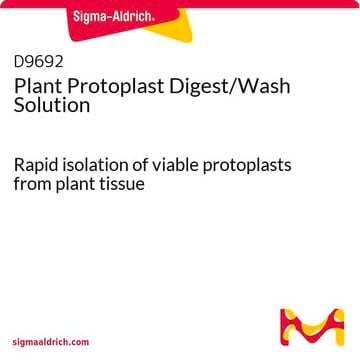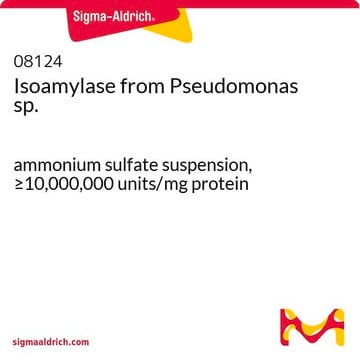Specific articles on pH and temperature range citing this product are not currently available. Please see the link below to review a publication that may be helpful:
Kluczowe dokumenty
17389
Pectinase from Aspergillus niger
powder, slightly beige, >1 U/mg
Synonim(y):
Polygalacturonase
About This Item
Polecane produkty
pochodzenie biologiczne
Aspergillus niger
Formularz
powder
aktywność właściwa
>1 U/mg
kolor
slightly beige
temp. przechowywania
2-8°C
Szukasz podobnych produktów? Odwiedź Przewodnik dotyczący porównywania produktów
Powiązane kategorie
Opis ogólny
Zastosowanie
Działania biochem./fizjol.
Definicja jednostki
Hasło ostrzegawcze
Danger
Zwroty wskazujące rodzaj zagrożenia
Zwroty wskazujące środki ostrożności
Klasyfikacja zagrożeń
Resp. Sens. 1
Kod klasy składowania
11 - Combustible Solids
Klasa zagrożenia wodnego (WGK)
WGK 3
Temperatura zapłonu (°F)
Not applicable
Temperatura zapłonu (°C)
Not applicable
Środki ochrony indywidualnej
Eyeshields, Gloves, type N95 (US)
Wybierz jedną z najnowszych wersji:
Masz już ten produkt?
Dokumenty związane z niedawno zakupionymi produktami zostały zamieszczone w Bibliotece dokumentów.
Klienci oglądali również te produkty
-
Pectinase from Aspergillus powder reference 17389 Hi, can you suggest a publication with data of enzyme activity as a function of pH and temperature? Thank you in advance for your help.
1 answer-
Helpful?
-
Active Filters
Nasz zespół naukowców ma doświadczenie we wszystkich obszarach badań, w tym w naukach przyrodniczych, materiałoznawstwie, syntezie chemicznej, chromatografii, analityce i wielu innych dziedzinach.
Skontaktuj się z zespołem ds. pomocy technicznej











